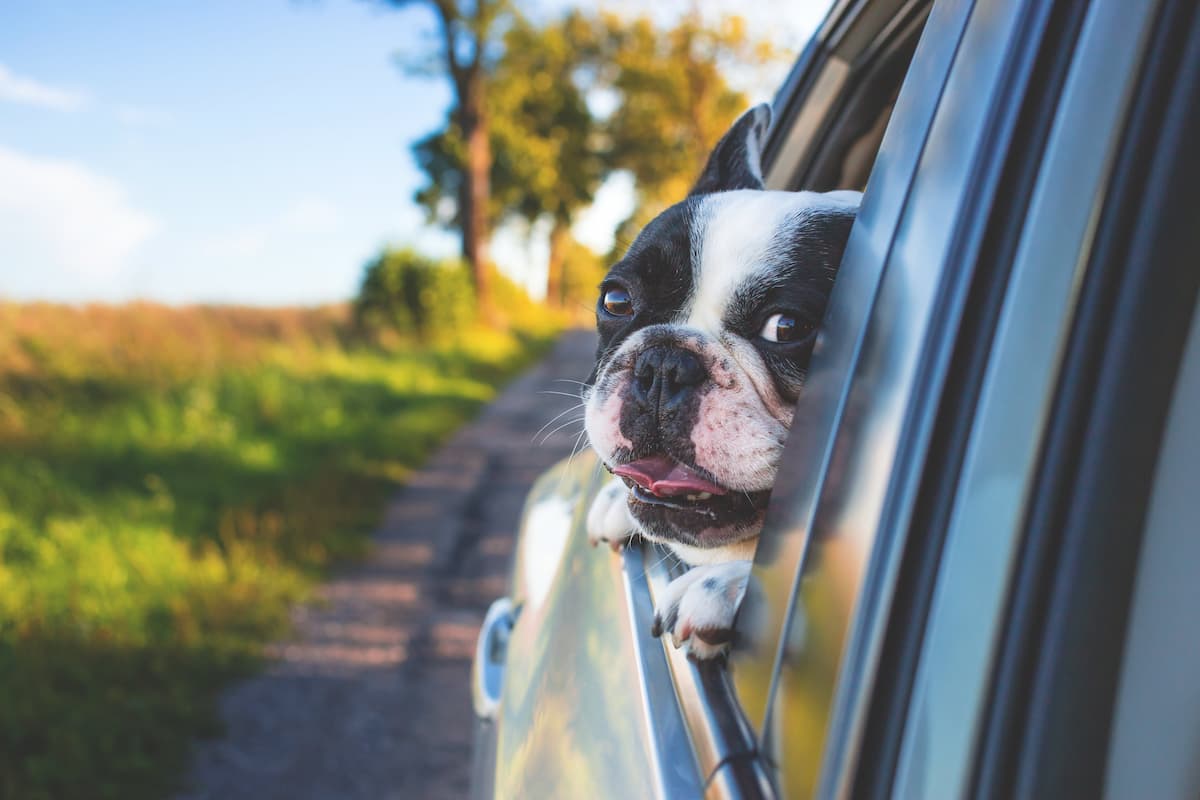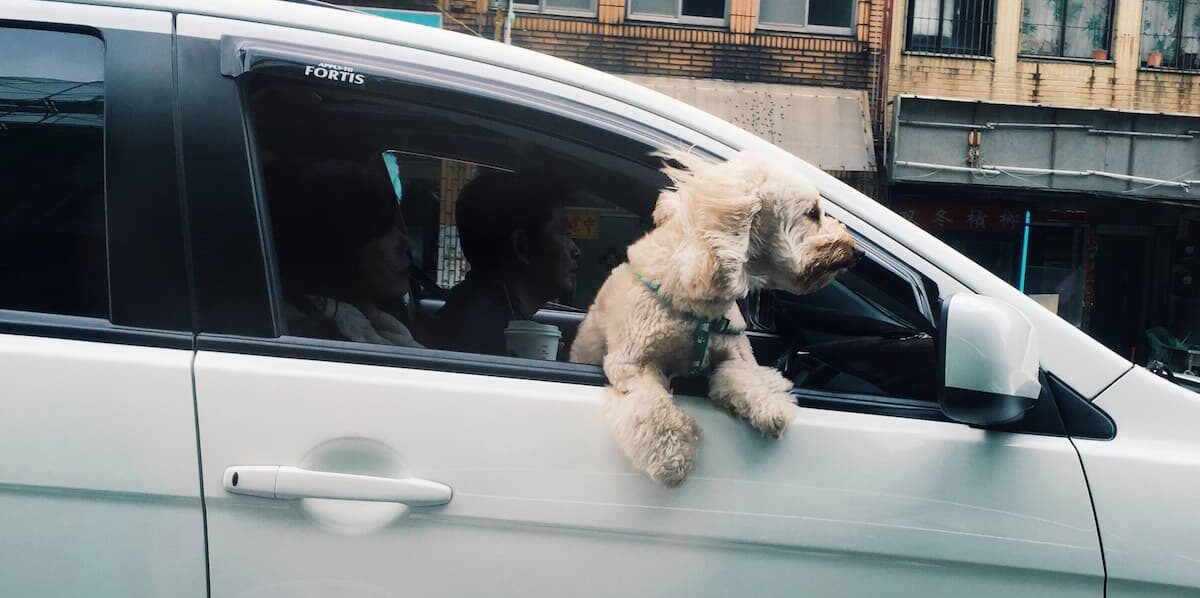Imagine this: the sun is shining, the road stretches ahead promising endless adventure, and you’re eager to embark on a much-anticipated road trip with your beloved furry friend.
You open the car door, excitedly beckoning your faithful canine pal to jump in.
But the moment you start the engine, something unexpected happens.
Your normally composed and tail-wagging passenger transforms into a quivering, trembling ball of fur.
What could be causing this puzzling behavior?
Do dogs have an innate aversion to automobiles, or are there deeper reasons behind their shakiness?
Read on to find out more.
Understanding the Behavior of Dogs Shake in Cars
1. Fear and Anxiety
One of the main culprits behind dog shaking in the car is fear and anxiety.
Dogs are creatures of routine and familiarity, and being in a moving vehicle disrupts their sense of security.
The unfamiliar sounds, the change in environment, and the anticipation of reaching an unknown destination can trigger anxiety in dogs.
This anxiety can manifest as shaking and trembling, as it is their way of coping with the stress and uncertainty of the situation.
These emotions can be triggered by various factors, such as:
New experiences: Dogs are creatures of habit, and the unfamiliar sights and sounds of a car journey can be overwhelming.
Previous negative experiences: If your dog has had a stressful or traumatic car ride in the past, the mere sight of a vehicle can trigger anxiety.
Car sickness: Just like humans, some dogs experience motion sickness.
The combination of movement and unfamiliar sensations can make them feel uneasy.
Lack of proper conditioning: If dogs aren’t gradually introduced to car rides during their early months, they may develop a fear of traveling in vehicles.
2. Motion Sickness
Motion sickness is a common issue that affects not only humans but also dogs.
Have you ever wondered why your furry friend starts shaking the moment they hop into the car?
Well, the answer lies in the inner workings of their delicate balance system.
Dogs, just like humans, have a sensory system that helps them maintain their balance.
However, some dogs are more prone to motion sickness than others, and it can cause them to feel uneasy and uncomfortable during car rides.
One of the main reasons dogs shake during car rides is due to the conflicting signals their brain receives.
When a dog is sitting in a moving vehicle, their body is constantly sensing the motion of the car.
However, their eyes may not be able to see the objects passing by as clearly as ours do.
This disconnect causes a disorienting effect, making the dog feel dizzy and nauseous.
To cope with this discomfort, dogs often start shaking as a way to release tension and calm their nerves.
Helping Dogs Overcome Car-Related Anxiety
Dogs and cars, it’s not always a match made in heaven.
If you’ve ever had a pup who trembles like a leaf whenever you pull out of the driveway, you know how distressing car-related anxiety can be.
But fear not, because there are proven techniques that can help your furry friend overcome this fear and eventually associate car rides with positivity:
1. Counterconditioning
One effective technique is to create positive associations with the car.
Start by simply having your pup near the car without actually going for a ride.
Reward them with treats, praise, and plenty of cuddles.
The goal here is to make them feel safe and relaxed around the vehicle, gradually increasing their exposure as they become more comfortable.
This systematic desensitization can work wonders in helping your dog overcome their anxiety.
2. Familiar Scents and Toys
Dogs have a powerful sense of smell, so introducing some familiar and comforting scents to the car can help put them at ease.
Consider using their favorite blanket or toy as a source of familiarity and security during the car ride.
By associating these positive scents with the car, you can help your pup feel more relaxed and less fearful.
3. Gradual Exposure and Short Trips
Rome wasn’t built in a day, and neither is a comfortable car-riding experience for your furry friend.
Start with short trips around the block and gradually increase their duration over time.
It’s important to go at your dog’s pace, letting them build their confidence and trust in the process.
Remember to reward their bravery and provide lots of praise and treats for their successful trips.
With time and patience, your pup will soon be a car-riding champ!
Remember, every dog is unique, so it may take some trial and error to find the techniques that work best for your four-legged friend.
Always be patient, understanding, and most importantly, positive throughout the process.
When to Consult a Veterinarian or Animal Behaviorist for Severe Car Anxiety in Dogs
One of the key signs that indicate it’s time to consult a professional is when your dog’s car anxiety interferes with their daily life.
If your dog exhibits extreme fear or panic while in the car, such as incessant shaking, drooling, panting, or even vomiting, it’s important to get them the help they need.
These symptoms indicate that your pup’s anxiety has reached a level where it’s affecting their physical well-being, and a professional can offer guidance and treatment options.
Another reason to reach out to a veterinarian or animal behaviorist is if your attempts to address the car anxiety on your own have been unsuccessful.
You may have tried various desensitization techniques, like gradually getting your dog accustomed to short car rides or creating positive associations with the car, but your efforts haven’t yielded the desired results.
Seeking professional help can provide you with a fresh perspective and access to additional strategies tailored specifically to your dog’s needs.
Ultimately, the decision to consult a professional should be based on your dog’s individual case and the severity of their car anxiety.
While mild anxiety can often be managed through gradual exposure and positive reinforcement, severe car anxiety may require more specialized interventions.
Remember, seeking help from a veterinarian or animal behaviorist can offer invaluable insights and support, helping you and your furry friend conquer car anxiety, and ensuring car rides become stress-free experiences for both of you.
FAQ
Q: So, why do dogs shake in the car anyway?
A: Well, there could be a few reasons for this, my friend.
Let’s start with motion sickness. Just like some humans, dogs can get queasy while traveling in a moving vehicle.
The constant motion, combined with the unfamiliar sensations, can make them feel a little off-kilter.
That discomfort can manifest in the form of trembling.
Q: Motion sickness, got it.
Is there anything else that might cause dogs to shake in the car?
A: Absolutely!
Another reason for those wobbly shakes could be anxiety or fear.
Imagine being a dog, going from the safety and comfort of your home to a noisy, fast-paced environment like the inside of a car.
The loud engine, the whizzing scenery, and the bumpy ride can be pretty overwhelming.
So, naturally, some dogs may shake due to anxiety or nervousness during car rides.
Q: Poor pups!
Is there anything we can do to help them feel more at ease?
A: Of course!
There are a few simple steps you can take to make your furry friend more comfortable.
One helpful approach is gradually acclimating your dog to car rides.
Start by letting them sniff around the parked car, rewarding them with treats, and then slowly work your way up to short drives.
This process helps desensitize them to the unfamiliar sensations.
Q: Interesting!
So, what other methods can we try?
A: Well, a popular option is investing in a doggy seatbelt or a comfortable travel crate.
These can help provide a sense of security and stability, reducing anxiety during the ride.
Additionally, familiarize your pup with the car environment by making it a positive experience.
Bring their favorite toy or blanket and play soothing music during the journey.
Some experts even suggest covering car windows to reduce external stimuli that might add to their unease.
Q: Those tips sound great!
Anything else we need to keep in mind about dogs shake in cars?
A: One essential thing to remember is never to scold or punish your dog for shaking in the car.
This will only increase their anxiety and make matters worse.
Instead, offer them gentle reassurance, soothing words, or even a calming, reassuring touch to let them know that you’ve got their back.
Farewell for Now
Next time you find your pooch trembling during a road trip, remember that it’s perfectly normal and nothing to be alarmed about.
Dogs shake in the car due to a variety of reasons, whether it’s anticipation, excitement, or even a touch of anxiety.
Remember, they’re just as susceptible to motion sickness as we are, so taking it easy on those winding roads can go a long way in making their ride smoother.
While some pups may simply prefer the comforts of their own home or a leisurely walk in the park, others might enjoy the thrill of an adventure alongside their favorite human.
It’s important to observe their behavior and cater to their individual needs, ensuring each car journey is a positive experience for them.
And if all else fails, don’t forget those trusty tools at our disposal – desensitization and crate training.
These techniques have proven to be highly effective in familiarizing our furry friends with the car environment and minimizing their anxiety.
So, the next time you buckle up and hit the road with Fido in tow, take a moment to appreciate their wiggles and shakes.
After all, it’s their way of expressing their emotions and embracing the ride alongside you.














